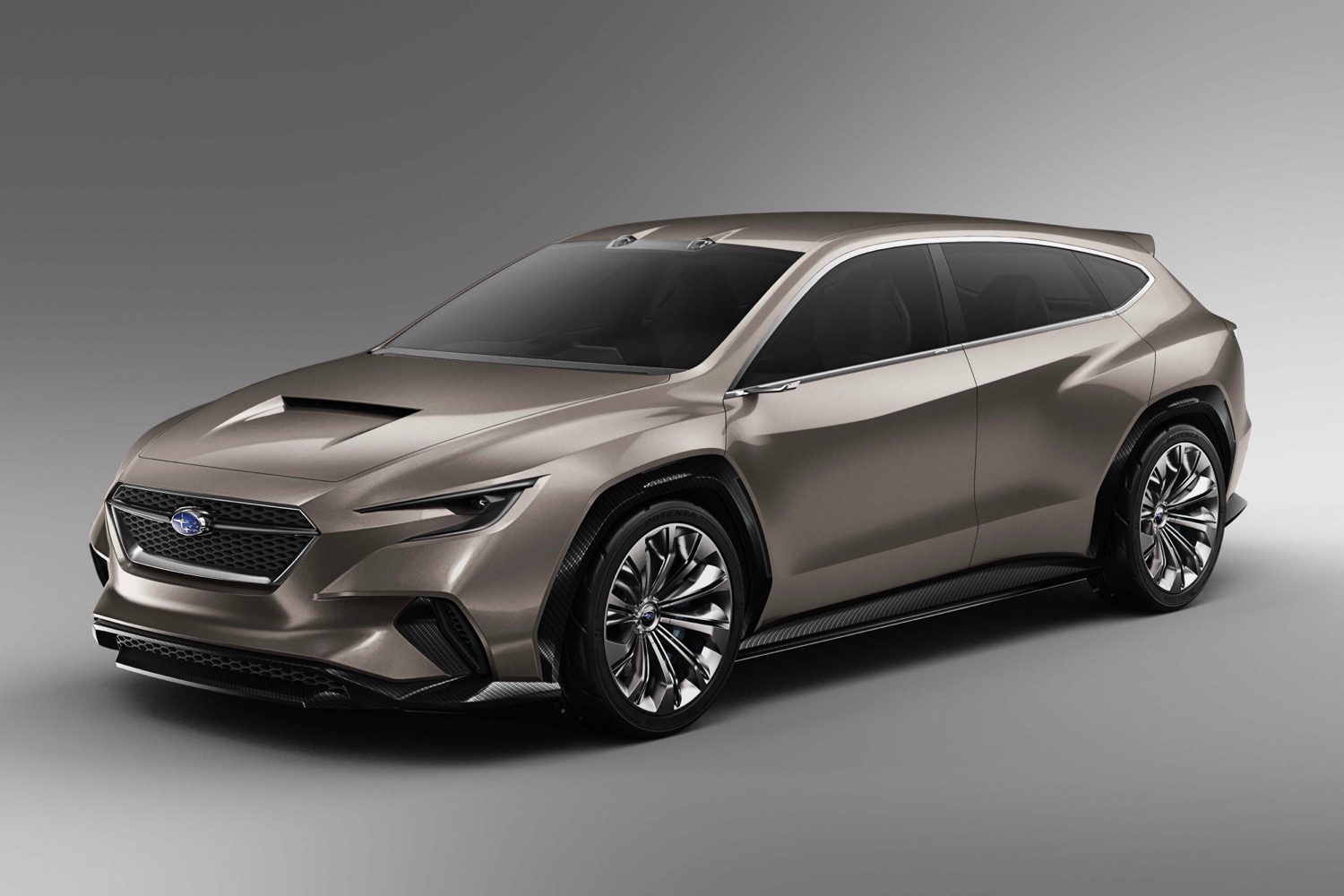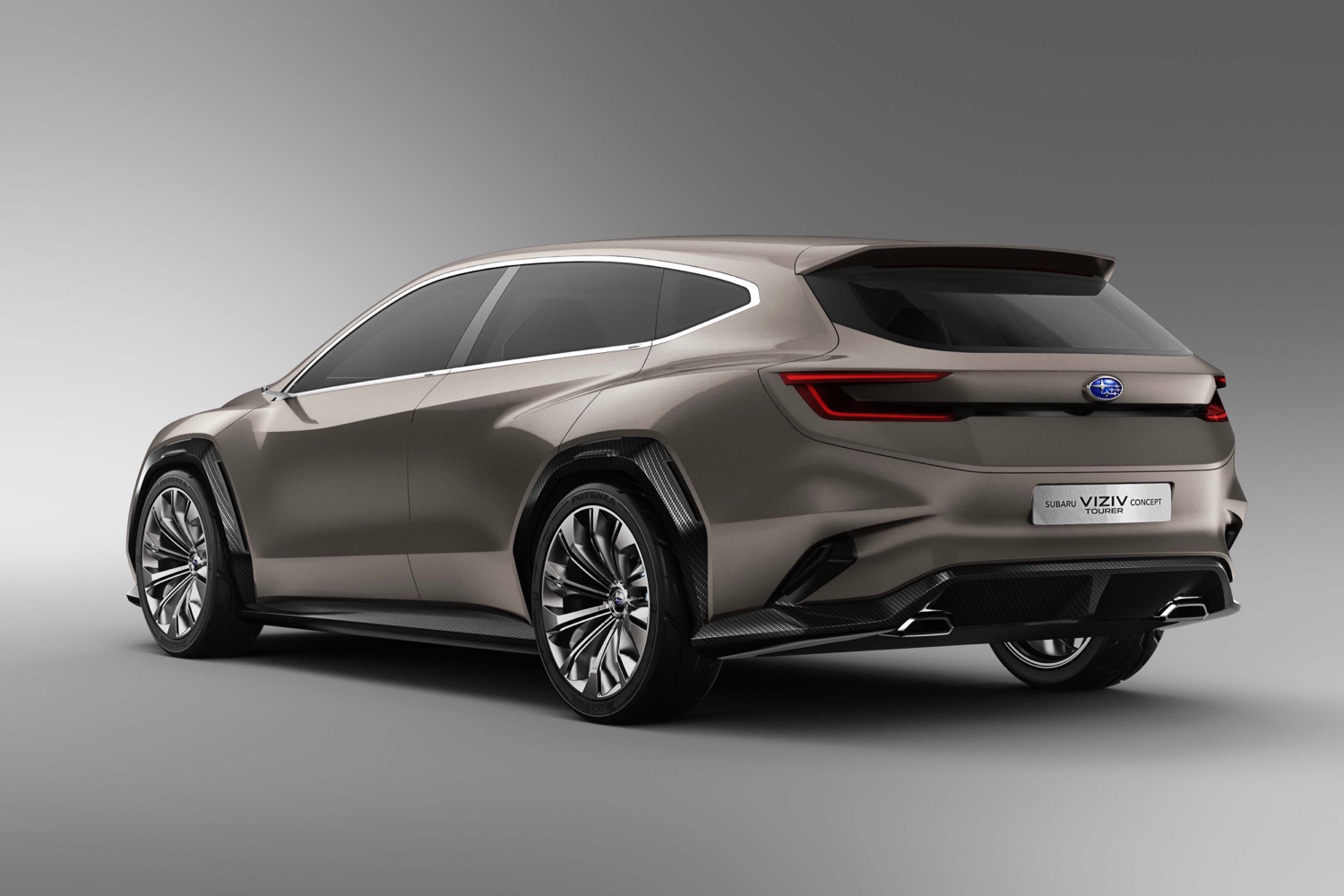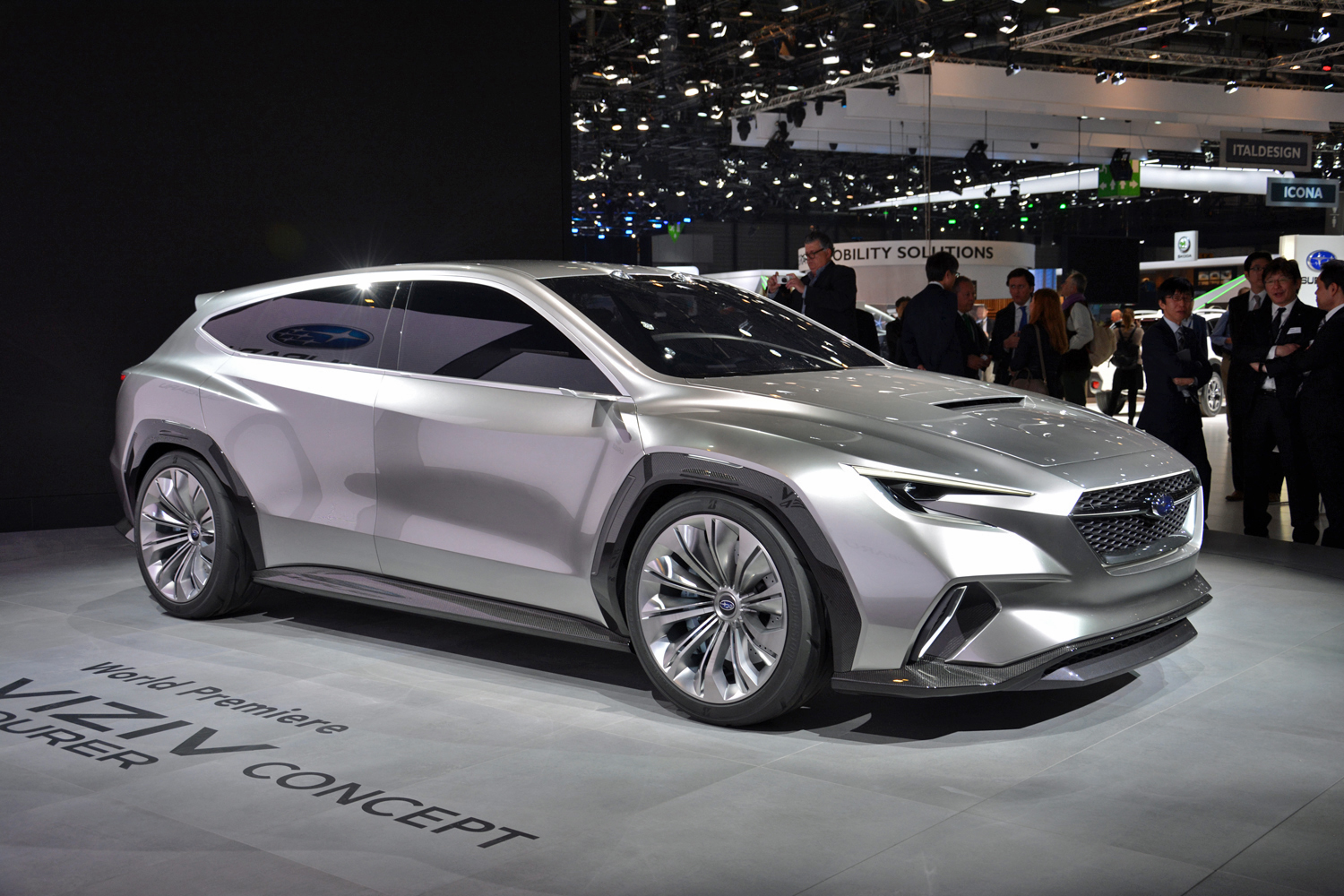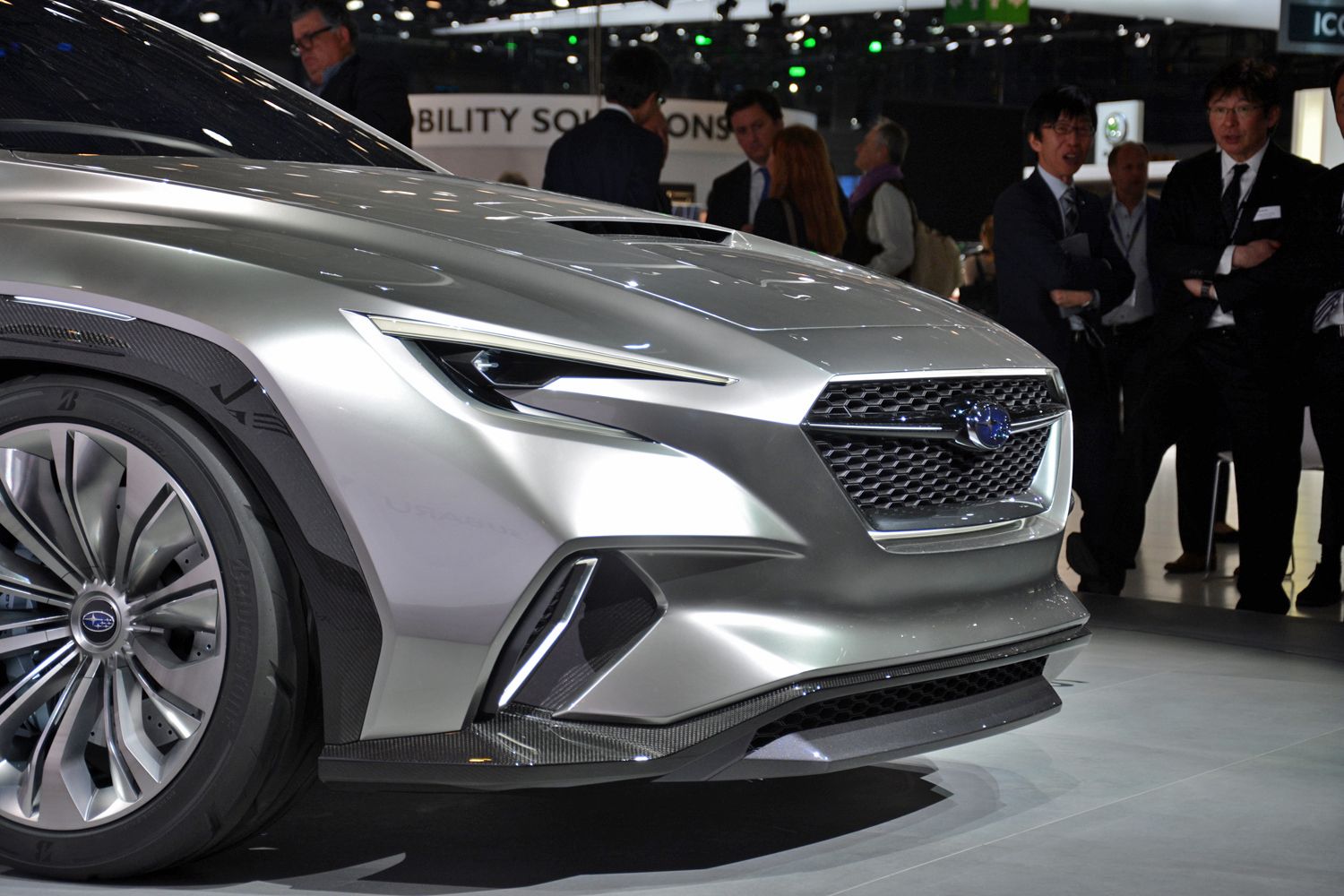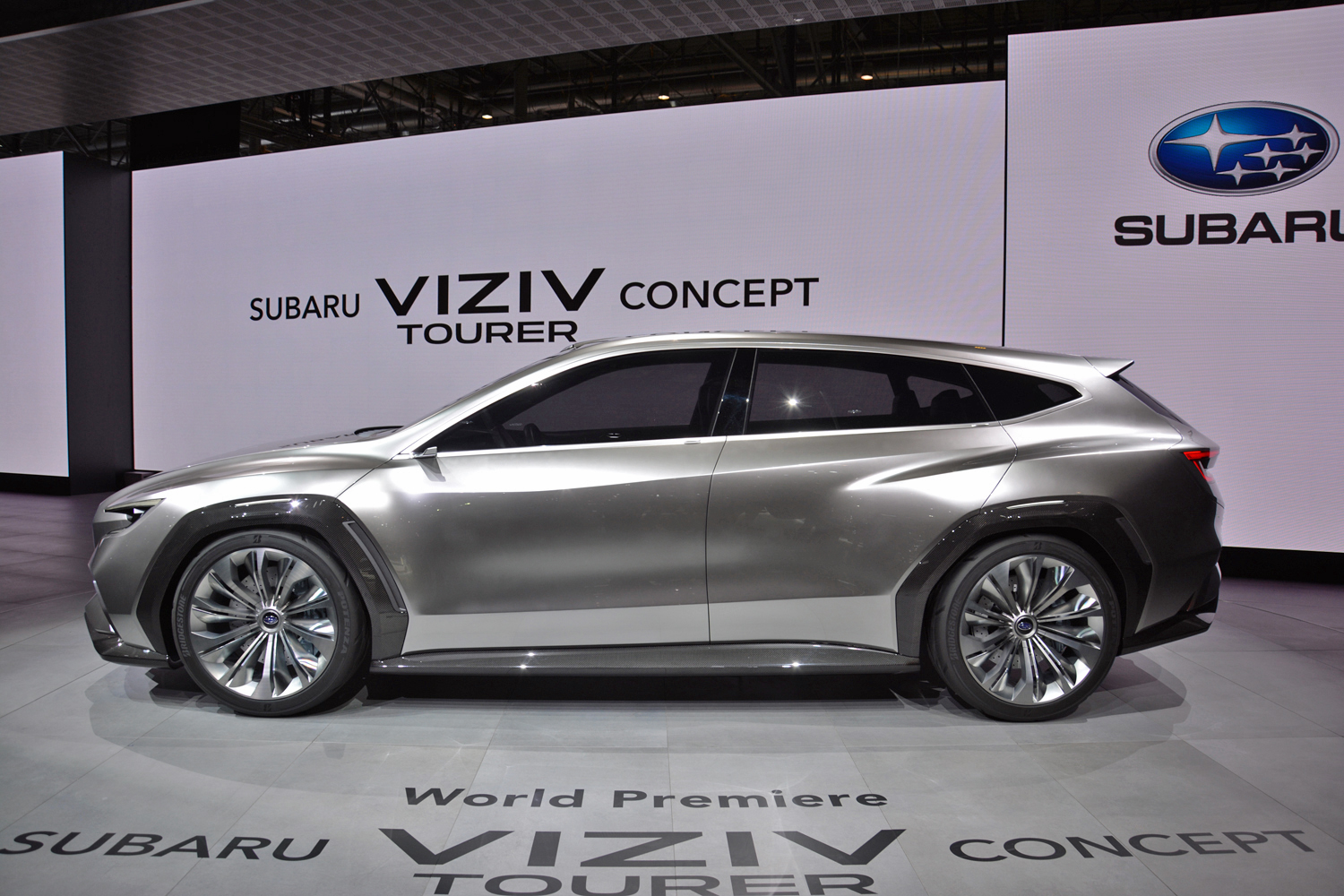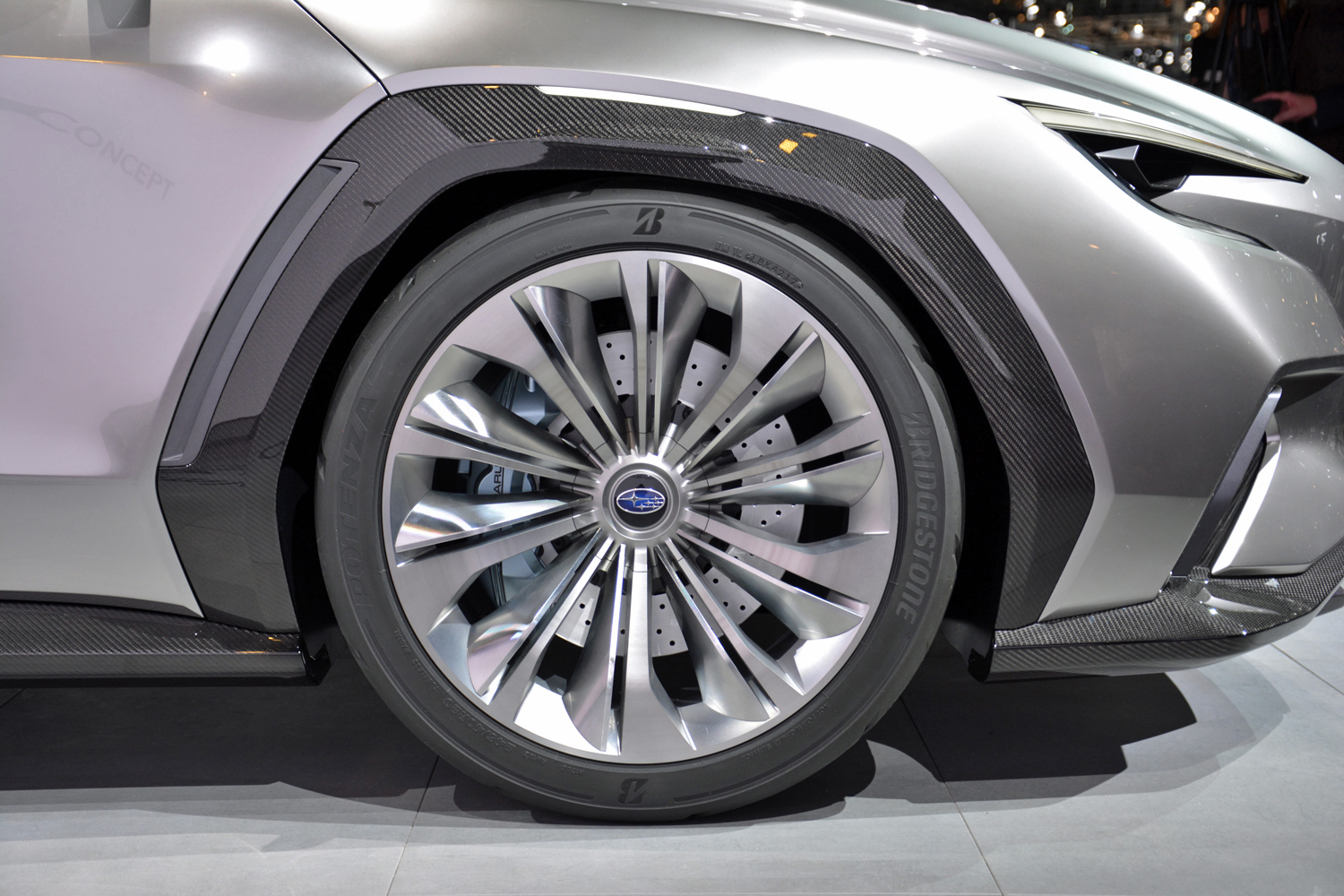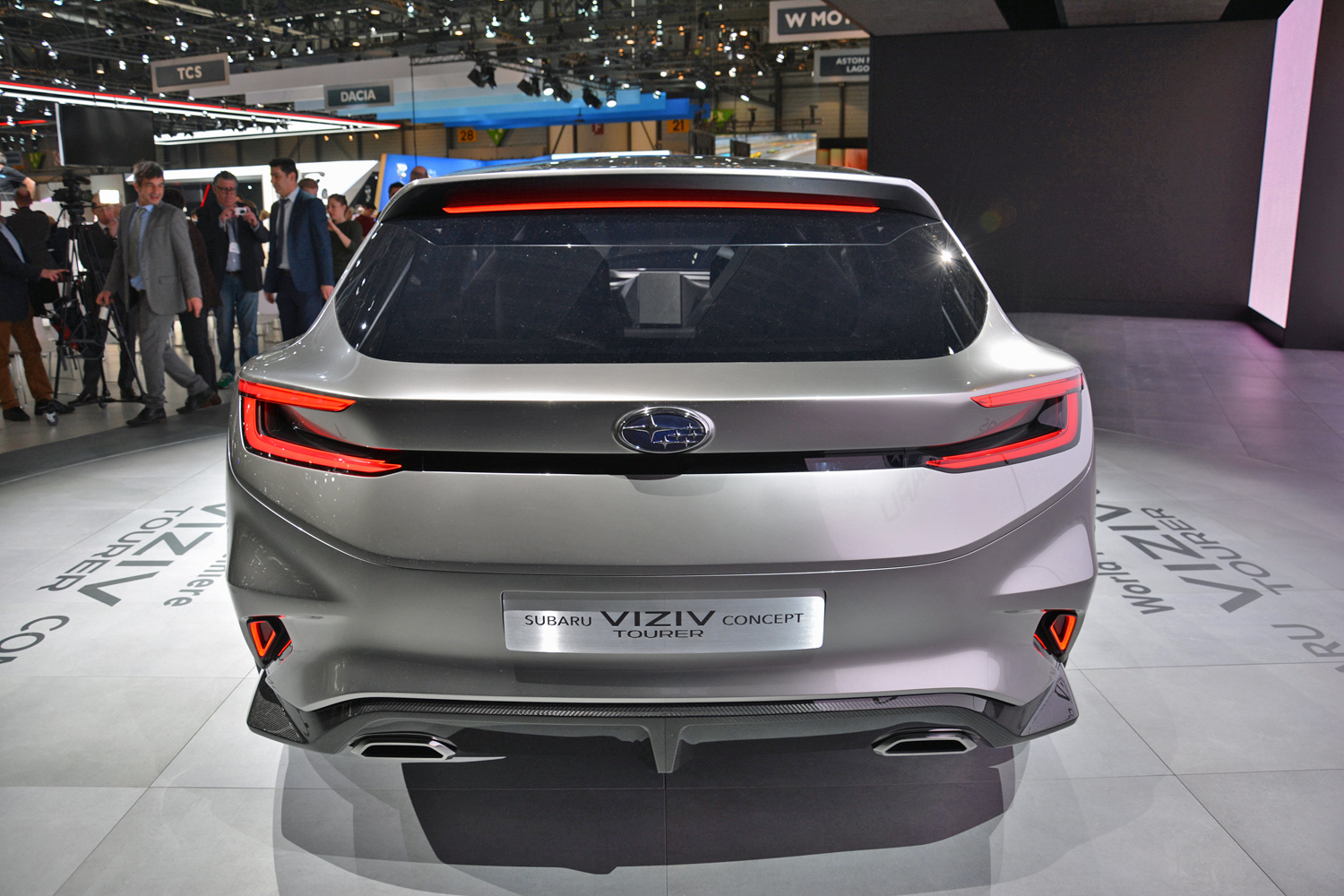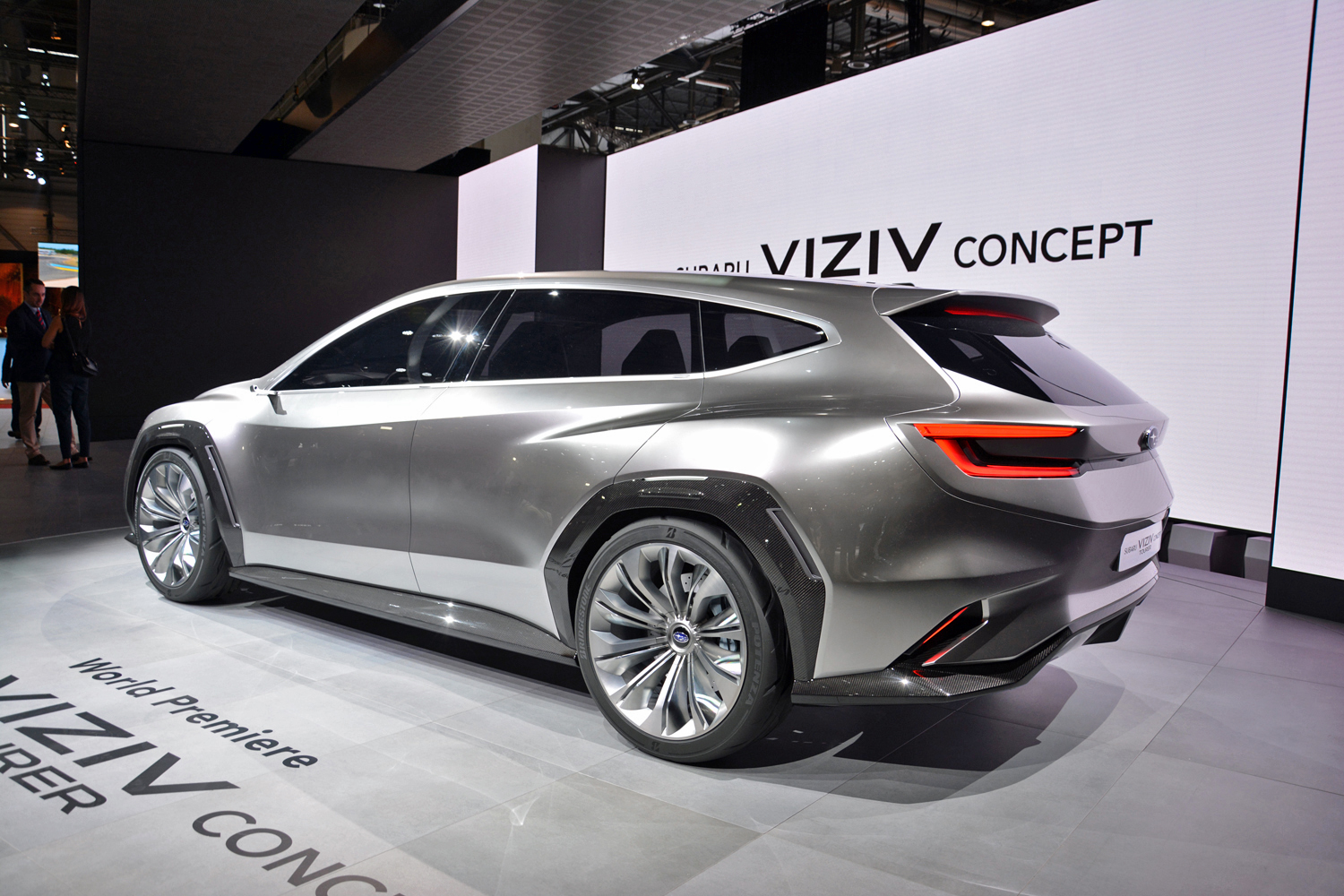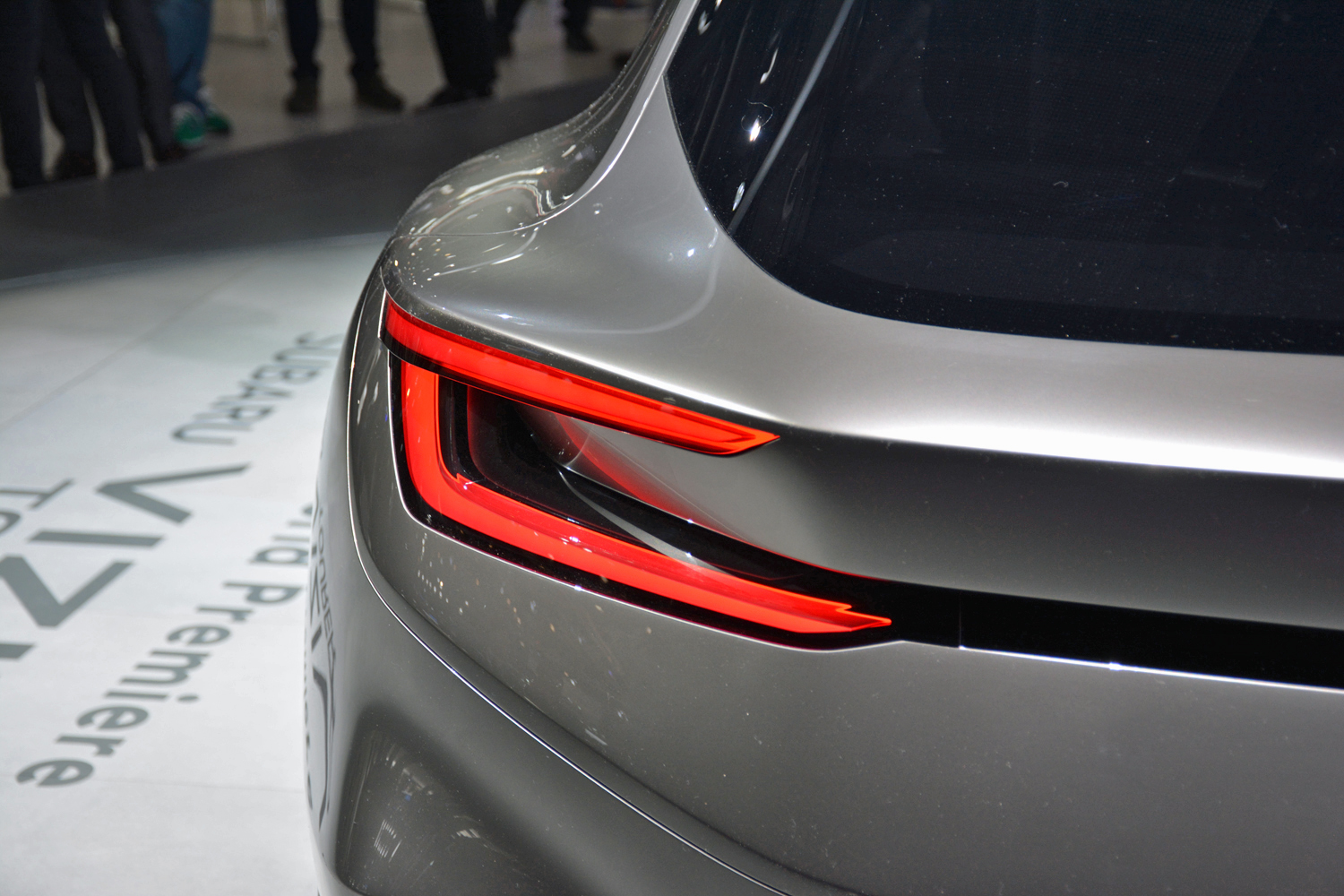Subaru has a loyal following, and that’s helped the Japanese automaker steadily increase sales while other automakers have struggled. But Subaru needs to address new technologies, and continue selling more cars to people who aren’t existing fans of the brand. That’s what the Subaru VIZIV Tourer concept is all about.
Unveiled at the 2018 Geneva Motor Show, the Tourer is the latest in Subaru’s series of “VIZIV” concepts. It may sound like the name of an alien race from Star Trek, but “VIZIV” is actually short for “Vision for Innovation.” It’s the label Subaru applies to concept cars that showcase new technology, or new styling themes.
The VIZIV Tourer seems to be more about styling than technology. It’s similar in size to the current-generation Outback, so it may offer an idea of what the next generation of that popular model (and its Legacy sibling) may look like. But while the Outback is an eminently practical five-seat wagon, the VIZIV Tourer only seats four. At least no one will have to squeeze into a center rear seat.
While some previous VIZIV concepts have featured hybrid powertrains, the VIZIV Tourer uses a stand-alone boxer engine with no electric assist. The engine sends its power to all four wheels. It’s a typical Subaru setup, and the company didn’t elaborate on what might make this powertrain different from the ones in its current production models. Subaru often slaps hood scoops like the VIZIV Tourer’s on more powerful turbocharged models, but didn’t confirm that this concept sports a turbo.
Subaru said the VIZIV Tourer features advanced driver-assist systems that will launch on production models in 2020, but didn’t offer many details on said systems. The automaker already offers the camera-based EyeSight system on current production models, which includes features like adaptive cruise control and autonomous emergency braking.
The Subaru VIZIV Tourer likely won’t go into production, but some of its design elements may appear on future Subaru production models. In the meantime, Subaru is rolling out its biggest vehicle ever, the Ascent, which comes with seating for up to eight people and 19 cupholders. It’s Subaru attempt to compete against the likes of the Honda Pilot and Toyota Highlander.
